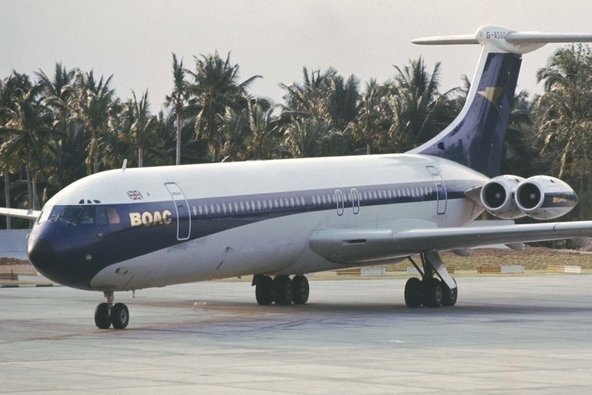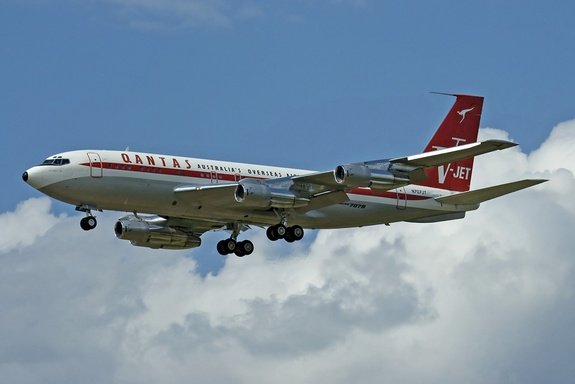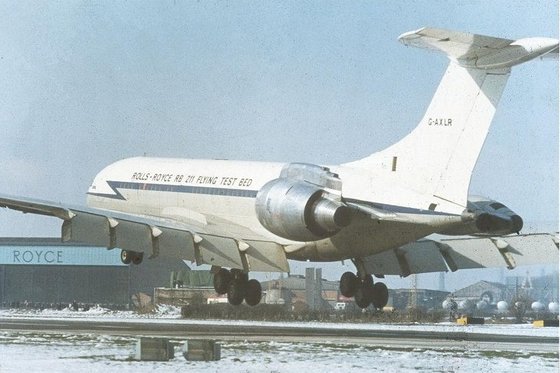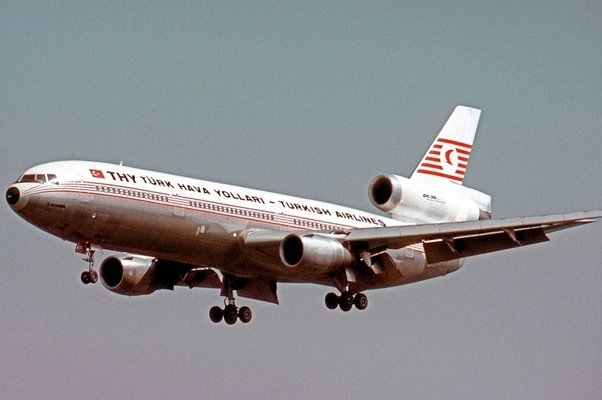
Date: 2024-12-21 Page is: DBtxt003.php txt00016916
Aircraft
History of Jet Engine Development
Quora ... Why does the McDonnell Douglas DC-10 airliner have such small engines even though its fuselage is as thick as a Boeing 777?
History of Jet Engine Development
Quora ... Why does the McDonnell Douglas DC-10 airliner have such small engines even though its fuselage is as thick as a Boeing 777?
Peter Burgess COMMENTARY
This information comes via QUORA which often contains a lot of interesting and easily accessible information.
I have experienced directly much of the 'history' described in this QUORA piece.
In the early 1960s I had young friends who were Cambridge trained engineers working on the development of the Rolls-Royce RB-211 engine ... specifically the composite material fan blades that were not stable at high stress and temperature and became the root cause of for the bankruptcy and reorganization of the Rolls Royce company and in some ways the basic cause of the commercial failure of the Lockheed 1011 TriStar aircraft.
I have flown a lot on Boeing 707s. My first flight on a 707 was a chartered flight by the Cambridge Canada Club using Air France planes to go from London to New York in May and return in September. If I remember correctly we paid £75 each for the two way flight! Back then, Americans were flying to Europe for summer vacations, but Europeans were not yet affluent enough to spend summer vacations in the USA! Quite frequently the Boeing 707 of around 1960 would refuel at some point between Europe and North America. In our case, refueling was talked about, but we did the journey non-stop!
I flew into Africa a lot starting in the late 1970s. BOAC ... and Caledonian ... were still using VC-10s from London into Africa.
I flew on both the DC10 and the Lockheed 1011, but not as much as I did on the Boeing 747 ... which, interestingly is not mentioned in the QUORA text!
I smile that it is a Turkish Airlines DC-10 that is pictured. At some point in the 1990s I travelled several times to Kazakhstan from New York and back. I used BA from New York to Istanbul and then Turkish Airlines (DC-10) from Istanbul to Almaty in Kazakhstan
The little fact about aircraft engine reliability in the last paragraph of the QUORA text is impressive!
Peter Burgess
Written by Graham Cox ... Graham Cox, Holds a UK PPL
Answered Jun 11th
The DC-10 is a much earlier generation of aircraft, designed in the mid 1960s. The ‘norm’ for engines at that time was relatively low bypass turbofans like the Rolls Royce Conway or the Pratt & Whitney JT-8D.

BOAC-Vickers-VC10

Quantas-Boeing-707
It was clear that big efficiency and power gains were to be had by building a much larger diameter engine with higher bypass ratios. Companies like RR and General Electric were working on that in the 60s. Indeed, the VC-10 was used for in-flight testing of the RB-211, and this clearly shows the difference between the Conway generation and the new generation:

RR test using Vickers VC10
The DC-10 and the (far superior) L-1011 were the first generation widebody jets, using the newer engine technology. The 747 was very close behind. But while a step forward in engines, these jets still needed 3 of them rather than 2 (also the regulations at the time forbade twins on overwater flights because reliability was not stellar).

Turkish-Airlines-Douglas-DC10
But of course the trend to ever larger, more powerful, more reliable engines continued. By the mid 1970s, reliability had dramatically improved, as had power. New twins taking advantage of this came along, like the Airbus A300. A twin version of the L-1011 was even proposed, but never built.
If the first generation of commercial jets was the 707, VC-10, etc, the DC-10, L-1011 was the 2nd generation, A300, 757, 767 the third, and Boeing 777 was 4th generation. So two full generations ahead of the DC-10. Bigger diameter fuselages were not really required - the existing size was a familiar and reasonably comfortable layout and airlines, airports and passengers were used to it. Fuselages got longer, not wider.
The real win was in reliability - the first RB-211 had a major overhaul interval of 1,000 hours. These days its direct descendant is ~33,000 hours or more.